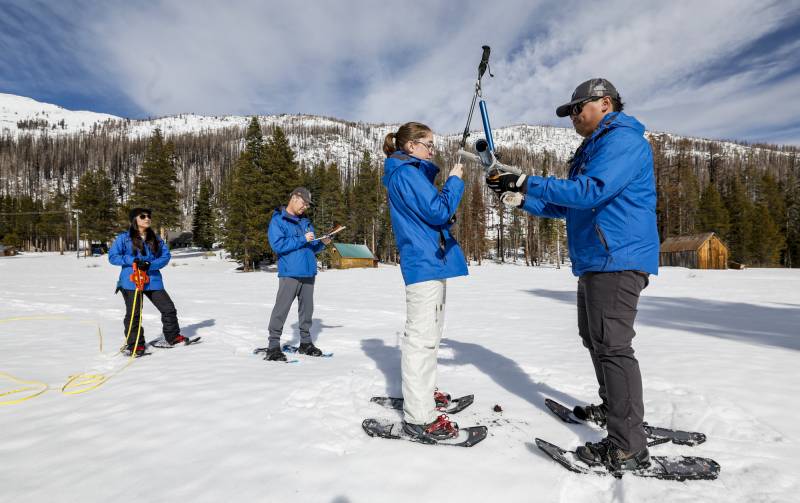He said this month’s storms piled snow on the mountains around the resort without overwhelming it and nearby communities.
“This has really helped out with our snow totals,” Lacey said. “We are currently sitting at 225 inches for the season. Obviously, that’s not last year’s numbers, but we’re sitting pretty right now, especially in February.”
Lacey said the additional 3 1/2 feet of snow arrived just in time for the Stifel Palisades Tahoe Cup this weekend, where more than a hundred athletes from 28 countries will compete. The ski competition is part of the Audi FIS Ski World Cup circuit.
“It’s skiing really good out there,” he said.
The future is looking average — and snowy
The next potential for rain and snow is early next week, which UC Berkeley’s Schwartz said may help the state to finally climb out of the “deficit we incurred early in the year” with a dry start to the winter.
“It’s still far out to make promises, but it looks like it will be a stormy start to March, which should further help us out,” he said.
Katrina Hand, a National Weather Service Meteorologist in Sacramento, said the agency expects another storm system to move over the Sierra early next week. While the storm may not be as strong as the last several, it could still create travel issues along mountain passes.
“Looking at the current forecast, we do have anywhere from a few inches locally up to a foot in terms of the total snow over that time frame,” she said. “It is still a few days away, so we are fine-tuning those details. But at the very least, I would encourage people to plan for some wintry weather over that late Sunday through Tuesday time frame in the Sierra.”

